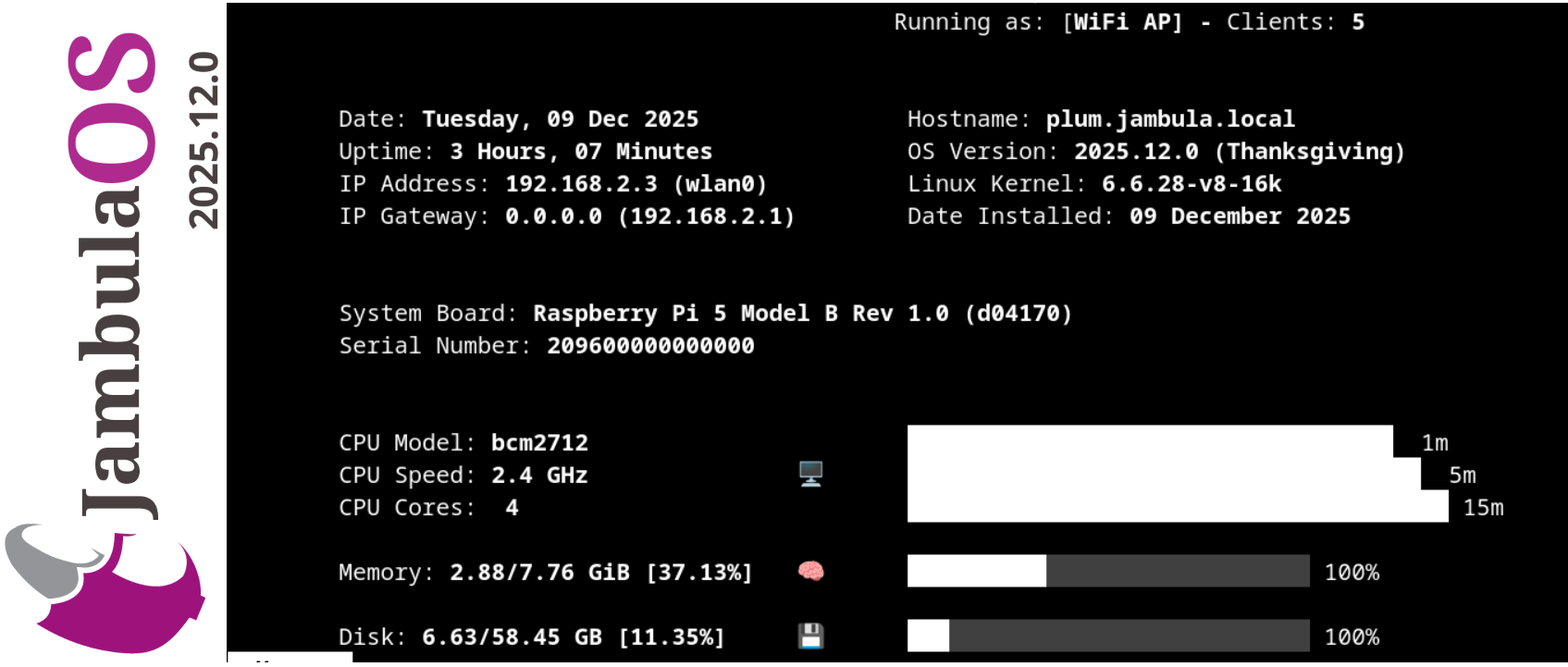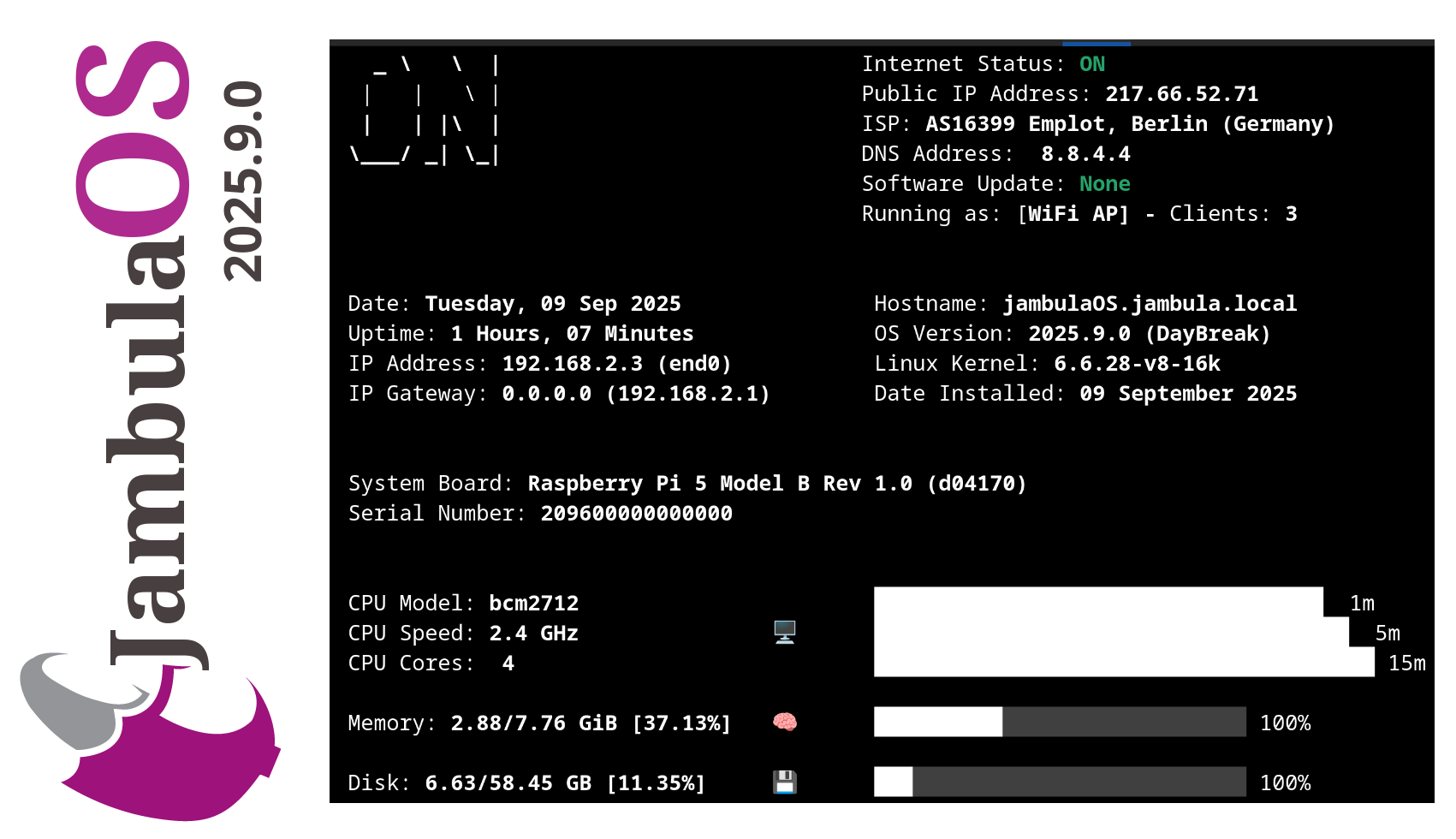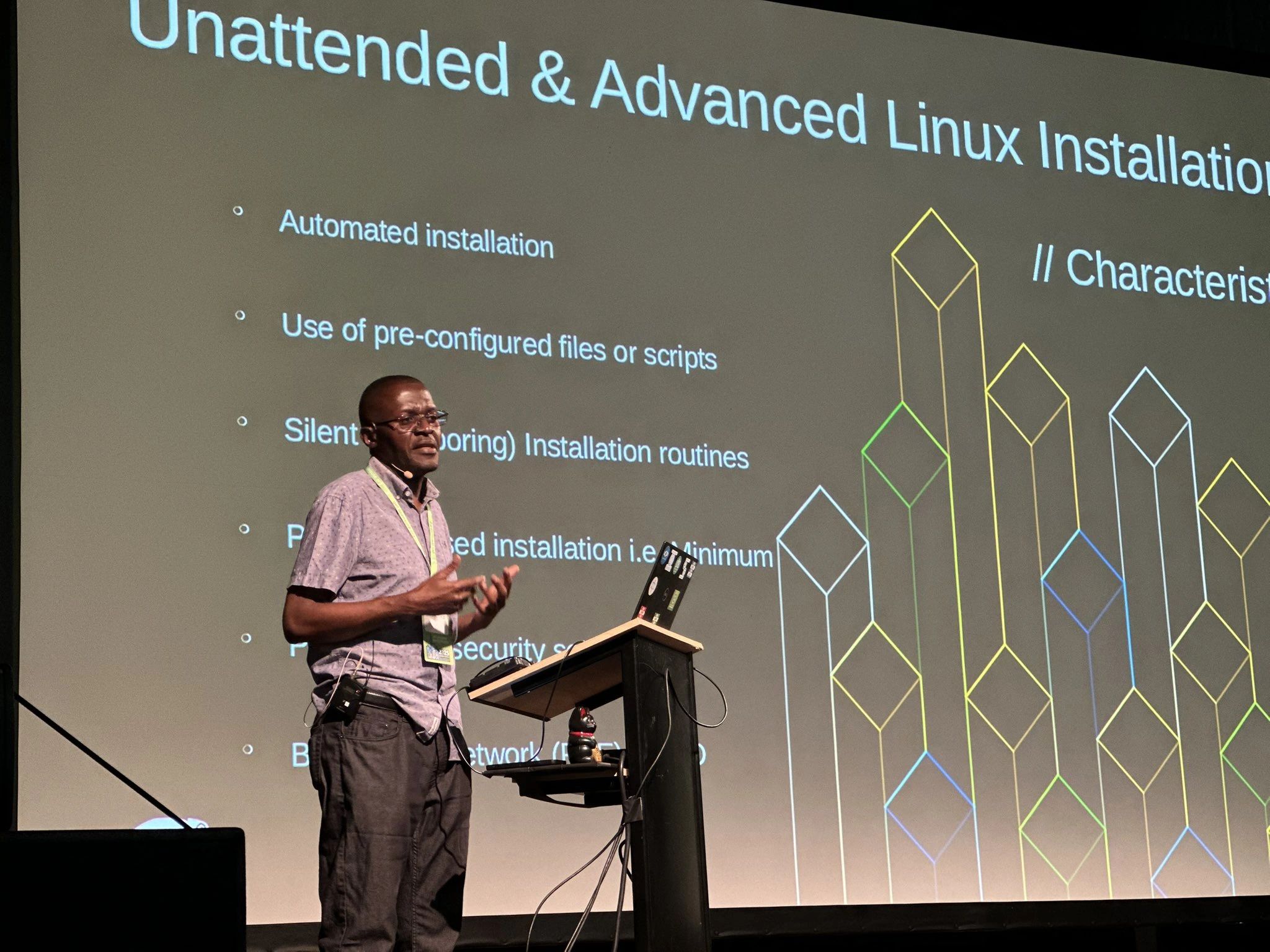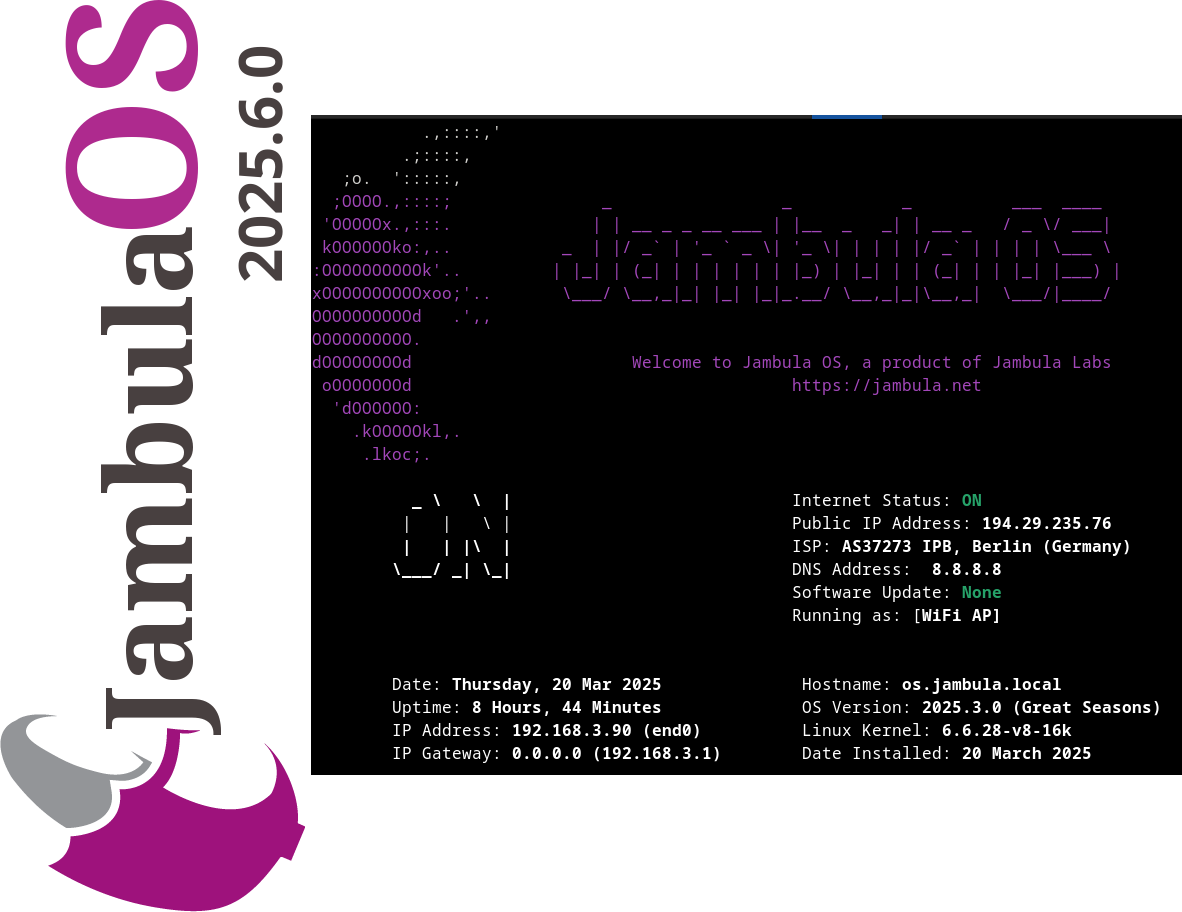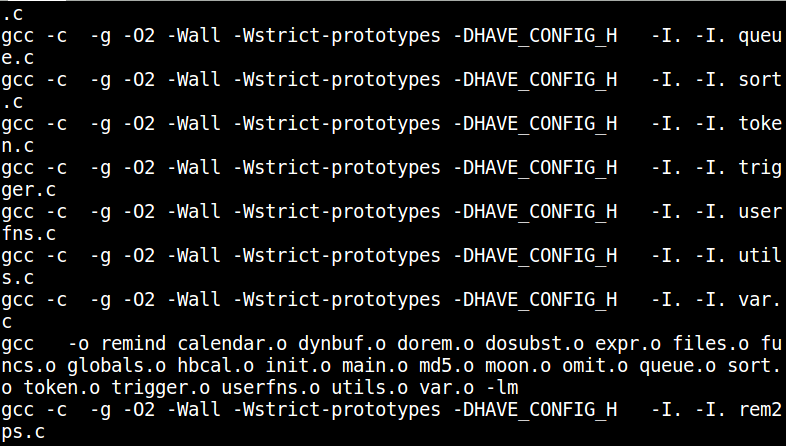Jambula OS 2025.12.0 is Here! Now featuring a Robust, Cloud-Free, Private File Sharing Platform
I am excited to announce the immediate release of Jambula OS version 2025.12.0!
If you are a developer, a dedicated tech enthusiast, or a passionate DIY maker looking for a local and open smart home, this major release is built for you. Designed for the Raspberry Pi 5 and other SBCs, Jambula OS is the free, open-source Linux platform that I started with the goal of putting you back in control.
Do you already own a Raspberry Pi 5? Or perhaps you’re hoping that Santa listened closely this year? Either way, this major update makes it the perfect time to download the latest image of Jambula OS and transform your Pi into the brain of your next project.
What’s New in 2025.12.0
I focused on two main areas: making the system easier to use and making your data more private.
- Robust, Cloud-Free File Sharing and Collaboration: Tired of trusting your data to massive cloud providers? I included a Robust, Cloud-Free, Private File Sharing Platform in Jambula OS. Easily share documents and media privately with zero reliance on external cloud services. Your files, your rules.
- Complete Setup Menu Overhaul: I listened to your feedback! The new menus ensure a vastly improved initial setup and onboarding process, making the journey from flashing the image to running your first service smoother and faster than ever before.
- Home Assistant Version 2025.12.2: Your smart home deserves the best. This release ships with the latest Home Assistant version 2025.12, offering all the newest features of this world-class, local-first smart home platform.
For Valued Supporters: Enhanced Tools and Advanced Capabilities
To thank those who support the future of the Jambula OS project, I included a powerful suite of advanced tools in this edition:
Jambula Radio (In-House Smart Radio Broadcast): Discover how to listen to the radio the Smart way with this innovative, in-house solution.
A powerful, flexible NVR for intelligently organizing and monitoring your CCTV cameras, featuring optional AI integration..
Hotspot & Remote Access Tools: Comprehensive solution providing a robust Captive Portal for secure guest network access and specialized Managed Remote Access capabilities.
Features Available to All: Core Stability and Critical Performance
I’ve implemented several bug fixes and performance tweaks to ensure this is the most stable and reliable version of Jambula OS I’ve ever released.
Download Jambula OS 2025.12.0 Today!
https://jambula.org
#JambulaOS #IoT #DIY #RaspberryPi #Development #SmartHome #HomeAssistant #Linux #FOSS #OpenSource
Jambula OS 2025.9.0 Released – Now with Bluetooth Speaker Support!
I have uploaded the latest 𝐉𝐚𝐦𝐛𝐮𝐥𝐚 𝐎𝐒 image – version 𝟐𝟎𝟐𝟓.𝟗.𝟎. This release continues the work I have been doing to make Jambula OS, a reliable, lightweight Linux platform for embedded SoC devices like the Raspberry Pi 5. So if you are building smart automation solutions on embedded platforms, this update is definitely worth checking out.
𝐇𝐢𝐠𝐡𝐥𝐢𝐠𝐡𝐭𝐬 𝐢𝐧 𝐭𝐡𝐢𝐬 𝐫𝐞𝐥𝐞𝐚𝐬𝐞:
𝐁𝐥𝐮𝐞𝐭𝐨𝐨𝐭𝐡 𝐬𝐩𝐞𝐚𝐤𝐞𝐫 𝐬𝐮𝐩𝐩𝐨𝐫𝐭: Added support for Bluetooth audio devices which is ideal for voice prompts or music output.
𝐒𝐰𝐢𝐭𝐜𝐡𝐞𝐝 𝐭𝐨 𝐊𝐞𝐚 𝐃𝐇𝐂𝐏: Replaced dnsmasq with 𝐊𝐞𝐚 𝐃𝐇𝐂𝐏 for better dynamic addressing management.
𝐖𝐢𝐅𝐢 𝐡𝐨𝐭𝐬𝐩𝐨𝐭 𝐜𝐥𝐢𝐞𝐧𝐭 𝐜𝐨𝐮𝐧𝐭 𝐢𝐧 𝐌𝐎𝐓𝐃: See how many clients are connected to your hotspot right in the system’s MOTD.
𝐐𝐑 𝐜𝐨𝐝𝐞 𝐨𝐧 𝐢𝐧𝐢𝐭𝐢𝐚𝐥 𝐥𝐨𝐠𝐢𝐧: Displays a QR code linking to vendor/device info, useful for branding or support.
𝐈𝐦𝐩𝐫𝐨𝐯𝐞𝐝 𝐬𝐞𝐭𝐮𝐩 𝐭𝐨𝐨𝐥𝐬: Smoother first-time setup experience with updated scripts.
𝐇𝐨𝐦𝐞 𝐀𝐬𝐬𝐢𝐬𝐭𝐚𝐧𝐭 𝐮𝐩𝐝𝐚𝐭𝐞𝐝: Latest Home Assistant version included to keep your platform up to date.
𝐁𝐮𝐠 𝐟𝐢𝐱𝐞𝐬: Minor fixes including firewall and weather integration improvements.
𝐋𝐞𝐚𝐫𝐧 𝐦𝐨𝐫𝐞 𝐚𝐛𝐨𝐮𝐭 𝐉𝐚𝐦𝐛𝐮𝐥𝐚 𝐎𝐒:
https://code.jambula.net/zikusooka/Jambula-OS
Demo of Agama Linux Installer at OpenSUSE Conference 2025 – Nuremberg, Germany
Over the weekend at the OpenSUSE Conference 2025 in Nuremberg, Germany, I had the pleasure of showcasing Agama, the innovative new Linux installer set to debut in openSUSE Project Leap 16 and SUSE Linux Enterprise Server 16.
While still in active development, this tool is shaping up impressively and promises to redefine the future of unattended Linux installations.
Curious to learn more or get started? Explore the full documentation here:
https://agama-project.github.io/docs/user/
Announcing Jambula OS Linux Version 2025.6.0 – Now Available!
I’m excited to share that the latest image of Jambula OS Linux – Version 2025.6.0 is officially live!
This small, maintenance-focused update wraps up important improvements as I look ahead to a week full of fresh open source ideas, conversations, and community engagement.
Why Jambula OS?
Jambula OS is a lightweight, flexible Linux distribution optimized specifically for Raspberry Pi and other low-power, SoC-based edge devices. It’s designed with performance, stability, and adaptability in mind, making it the perfect foundation for embedded systems and automation projects at the edge.
My vision? To make Jambula OS the go-to platform for innovators building smart home and office automation hubs. Ambitious? Absolutely. But innovation thrives on ambition!
What’s next?
With this update complete, I will soon begin preparations for the next major release. Stay tuned for exciting new features and enhancements that will continue to empower developers and creators alike.
Download the latest Jambula OS image here:
https://github.com/zikusooka/Jambula-OS
Exciting times are ahead. Let’s keep building the future together!
Why installing open source packages using sources is cool and how to start today
Until you start installing packages on Linux/UNIX systems using sources, you will always be very dependent on your distribution or vendors to stay up to date.
Installing from sources may not be for everyone, but I recommend it for novice and advanced Linux/UNIX users alike, as it offers tremendous benefits:
- Ability to fine tune the package according to your needs
- You almost always end up with a much faster application
- You get the latest security updates immediately
- You learn a whole lot
So how do you install from sources?
- Download the package from URL upstream
The package may be in several forms: PACKAGE.tar.gz, PACKAGE.tar.bz2, PACKAGE.xz, or clone from a github repository i.e. git clone [URL]
- Unpack the package inside your sources directory e.g. /usr/src:
tar zxvf PACKAGE.tar.gz -C /usr/src
tar jxvf PACKAGE.tar.bz2 -C /usr/src
tar xvf PACKAGE.tar.xz -C /usr/src - IMPORTANT: Read the following two files if available: README (or README.md) and INSTALL. I can not stress how important it is to read the above files. The package
maintainer will usually include notes on how to compile and install the package - Change to source directory of the package
cd /usr/src/PACKAGE-VERSION/ - Compile
./configure - Install
make && make install
Thats it! If all went well especially during the make, you should be able to run your package. Sometimes, the configure command will specify that
a dependency is missing. You will need to install it before you proceed. This is why it is important that you read the README and INSTALL files.

